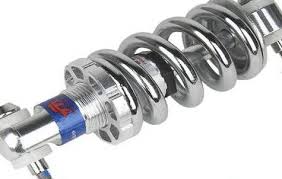Message
The material selection of automobile shock absorbers is crucial to their performance. The following is a clear summary and point-by-point representation of the materials used to make automobile shock absorbers based on information from reference articles:

metallic material:
Commonly used metal materials include steel, aluminum alloy, magnesium alloy, etc.
These materials are hard, high in hardness, strong, and have good corrosion resistance and wear resistance.
They are particularly suitable for occasions that need to withstand large impact and vibration forces. For example, the lightweight design of aluminum alloy shock absorbers has been widely used in the fields of automobiles, airplanes and other transportation vehicles.
spring:
Springs are usually used as buffer materials in shock absorbers.
Generally made of high-strength alloy steel or stainless steel, they have good compression and stretching capabilities and can withstand and buffer the impact and vibration generated by the vehicle during driving.
But the disadvantage is that it is easy to transmit medium-frequency vibrations, the damping is too small, and the vibration isolation ability near the resonant frequency is poor.
Rubber:
Rubber materials are widely used in various shock absorbers, mainly for absorbing shock and reducing vibration.
Advantages include light weight, good elasticity, wear resistance, strong absorption capacity, etc.
However, its disadvantages are relatively high natural frequency, small compression volume, easy to be affected by the external environment, unstable performance, and short service life.
ACF material:
ACF is a bionic cartilage metamaterial and the latest shock-absorbing technology nanostructured material on the market.
It can absorb more than 90% of internal and external impact forces, and its impact resistance and shock absorption ability are the best among all shock-absorbing materials.
It leads the industry in shock absorption energy absorption coefficient, and has passed environmental protection testing to reach environmental protection level, wear resistance, fire resistance, deformation resistance, and long service life.
Applicable to sports, medical, automotive, aerospace, military, construction, robotics and other fields.
Liquid:
In liquid shock absorbers, materials such as nitrogen, hydraulic oil and oil-gas liquid are often used to reduce the vibration generated during vehicle driving.
The principle of liquid shock absorbers is to transfer the energy of the vehicle through closed liquid or gas, thereby reducing the amplitude of vehicle vibration.
Common liquid shock absorbers include hydraulic shock absorbers in automobile suspension systems and nitrogen shock absorbers on aircraft landing gear.
But the disadvantage is that there are many requirements for use, strong airtightness and small range.
Other materials:
In addition to the above materials, automobile shock absorbers can also be made of carbon spring steel, alloy spring steel, silicone oil and other materials.
Carbon spring steel is a high-strength, high-rigidity, corrosion-resistant steel with good shock-absorbing performance.
In summary, the selection of materials for automobile shock absorbers should be determined according to specific application scenarios and needs. Metal materials, springs, rubber, ACF materials and liquids all have their unique advantages and scope of application. In practical applications, suitable shock absorber materials are usually selected according to the type of vehicle, usage environment and performance requirements to achieve the best shock absorption effect.









